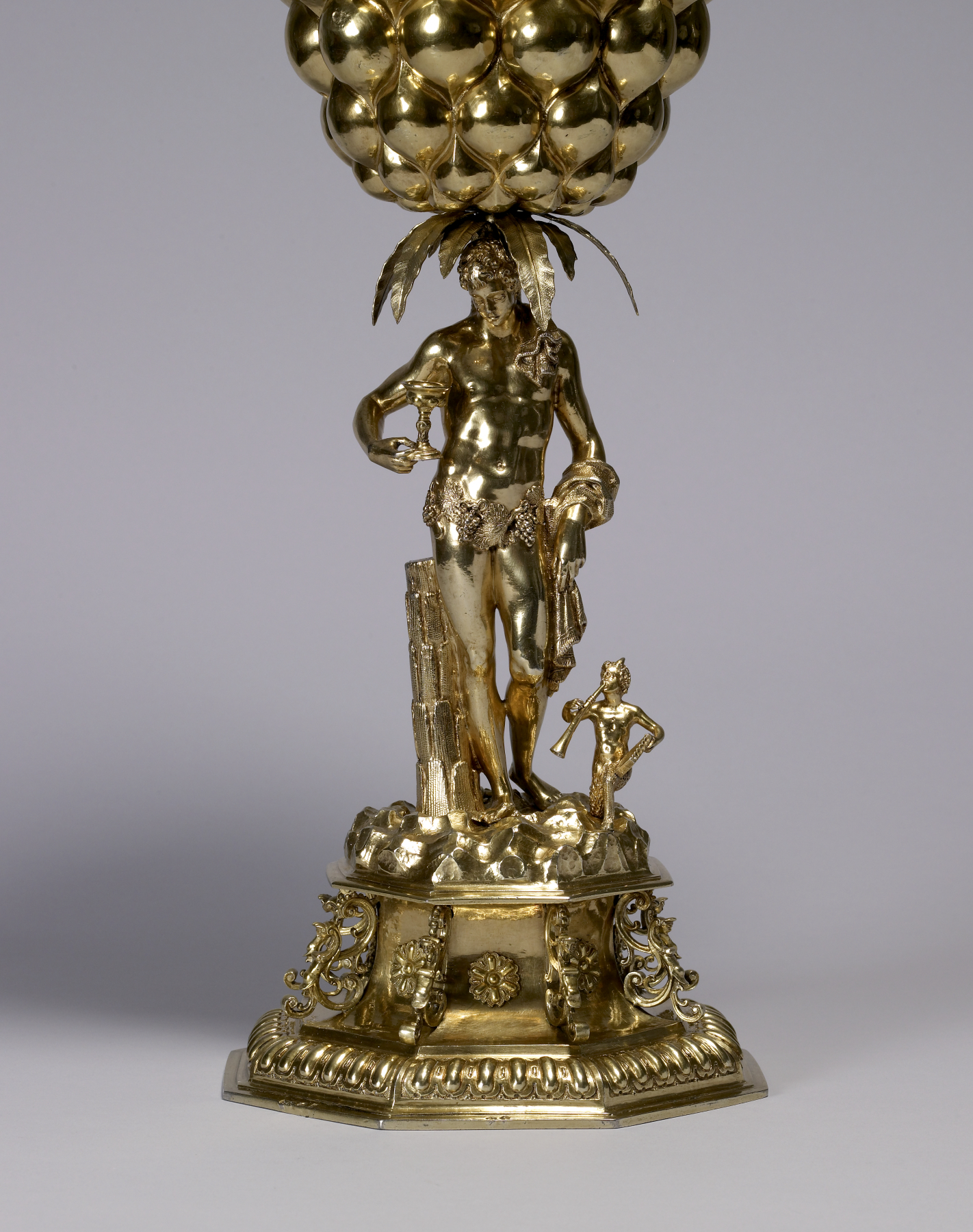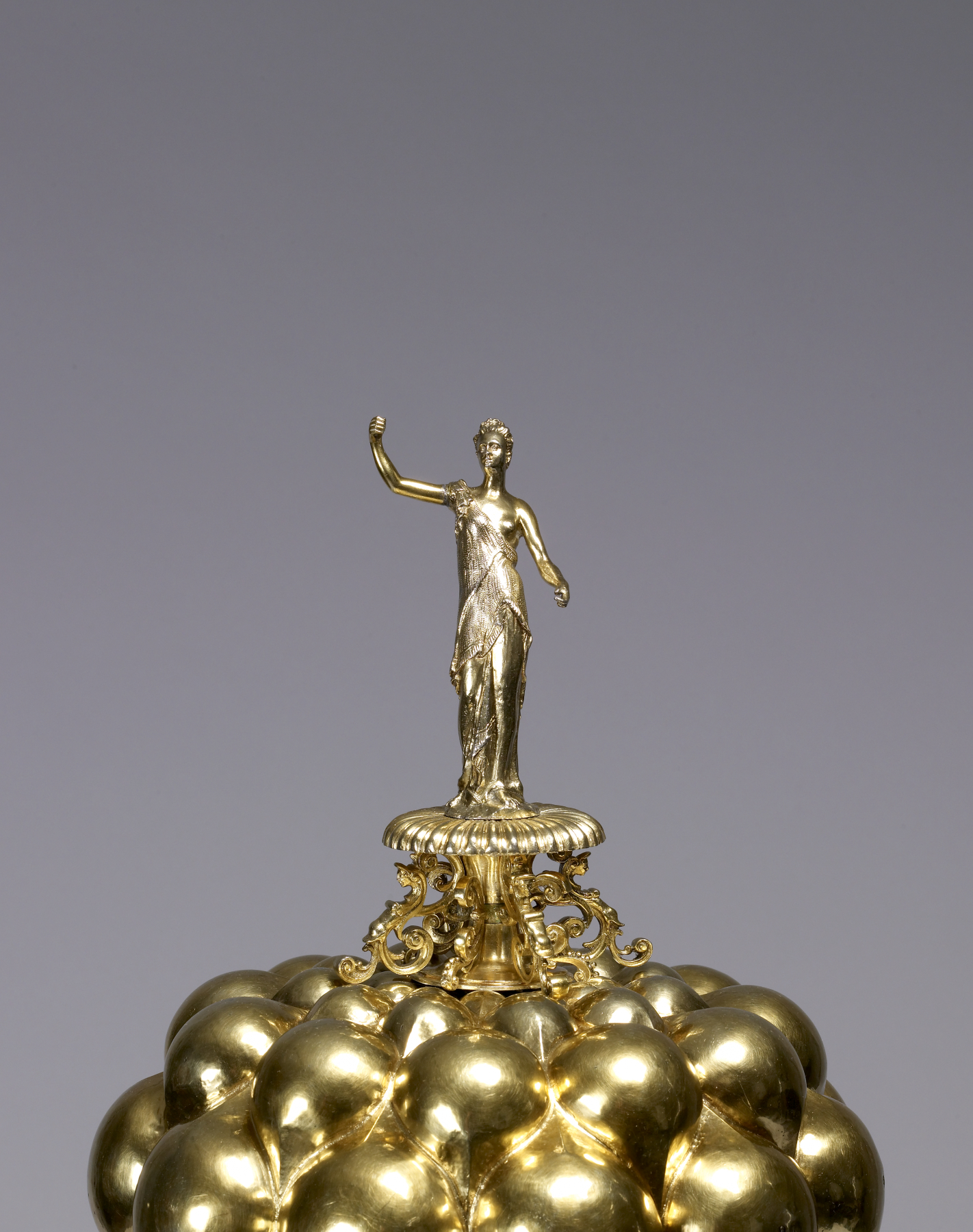Covered "Grapes" Cup with Bacchus
(Baroque Europe )
In Nuremberg, around 1600, such covered wine cups were called "Trauben" (grapes, cluster of grapes) cups. The cup was made from a sheet of silver beaten out into "grape" shapes before gilding. Covered cups of this immense size (requiring more than three quarts of wine to fill it) and impressive workmanship were commissioned as special gifts.
Kellner's talent as a sculptor as well as goldsmith comes out in the elegant figure of the Roman goddess Diana atop the cup and the figure which serves as the stem of the cup, Bacchus, Roman god of wine. At his feet is the satyr Pan with his pipes.
Provenance
Provenance (from the French provenir, 'to come from/forth') is the chronology of the ownership, custody, or location of a historical object. Learn more about provenance at the Walters.
[France]; [Russia] ca. 1736, by purchase [in France: excise and assay marks of St. Petersburg]; Rothschild Collection, prior to 1937 [mode of acquisition unknown]; Rothschild Silver Sale, Sotheby & Co., London, April 1937, lot 226; Hearst Collection [date and mode of acquisition unknown]; Mr. C. C. Rounds, New York [date and mode of acquisition unknown]; Walters Art Museum, 1958, by purchase.
Exhibitions
| 2008-2009 | Hearst the Collector. Los Angeles County Museum of Art, Los Angeles. |
| 1971-1972 | World of Wonder. The Walters Art Gallery, Baltimore. |
Conservation
| Date | Description | Narrative |
|---|---|---|
| 11/13/1963 | Treatment | cleaned; coated; reconstructed |
Geographies
Germany, Nuremberg (Place of Origin)
Measurements
H: 29 1/8 in. (74 cm)
Credit Line
Museum purchase, 1958
Location in Museum
Accession Number
In libraries, galleries, museums, and archives, an accession number is a unique identifier assigned to each object in the collection.
In libraries, galleries, museums, and archives, an accession number is a unique identifier assigned to each object in the collection.
57.1870






